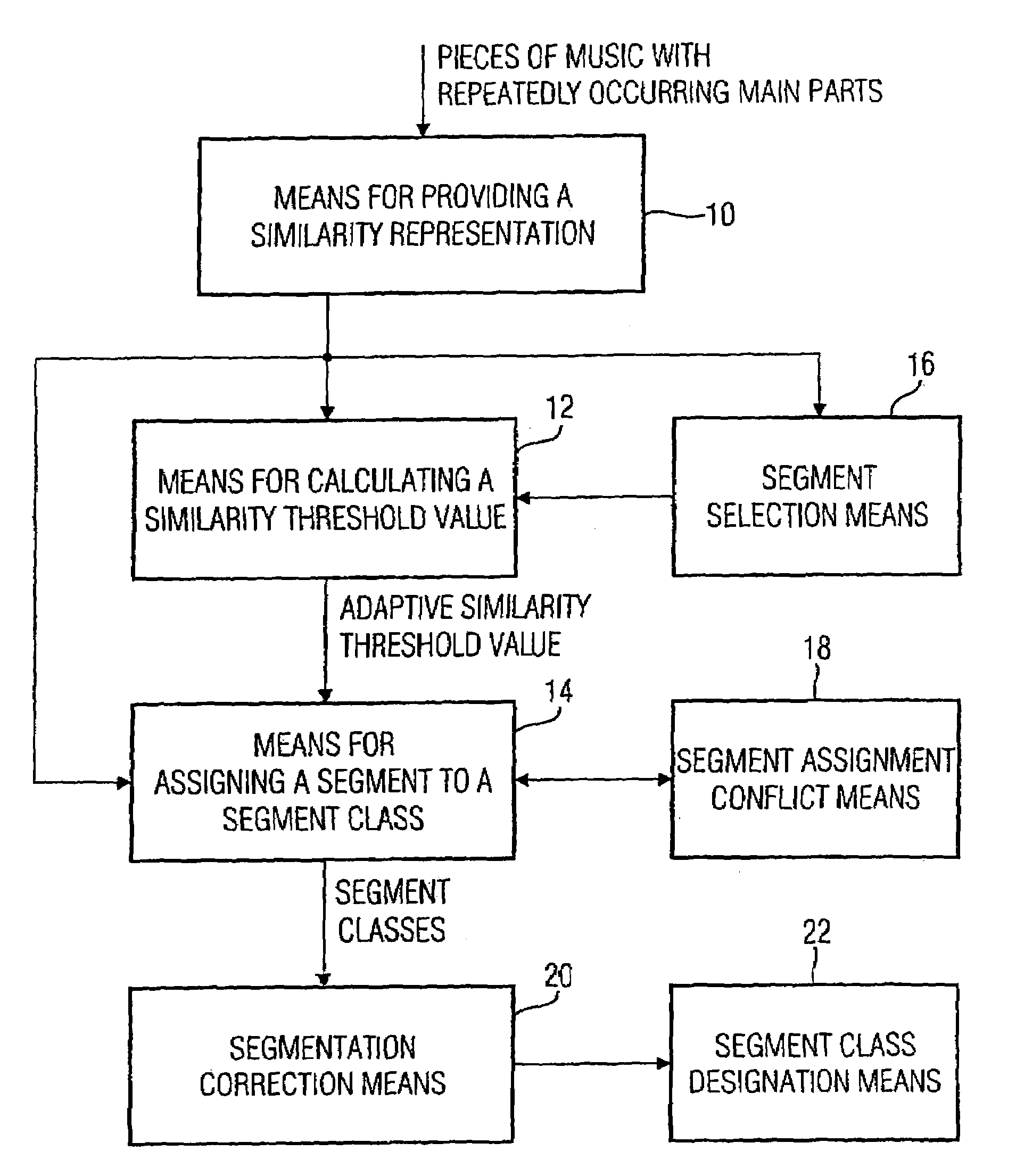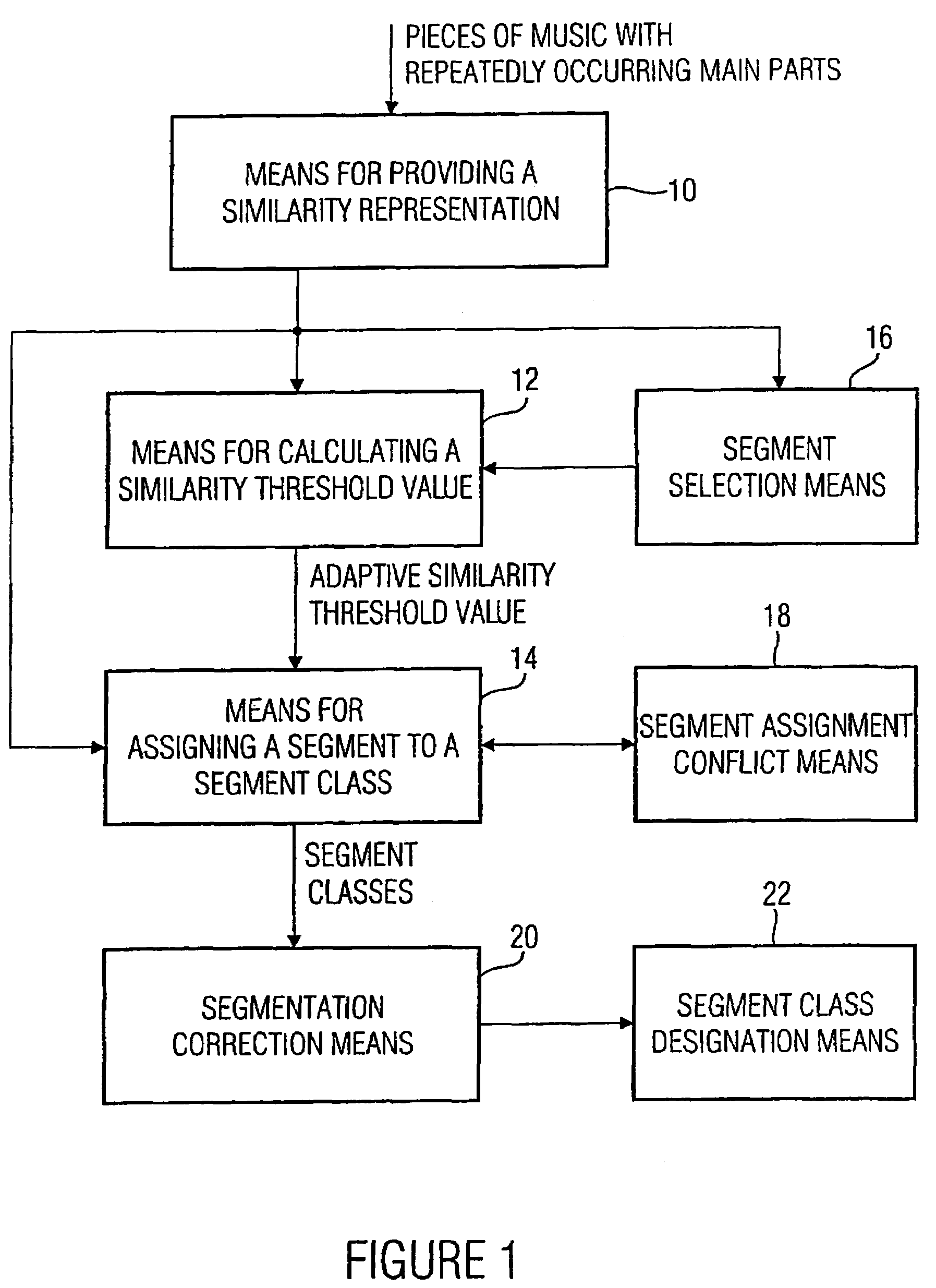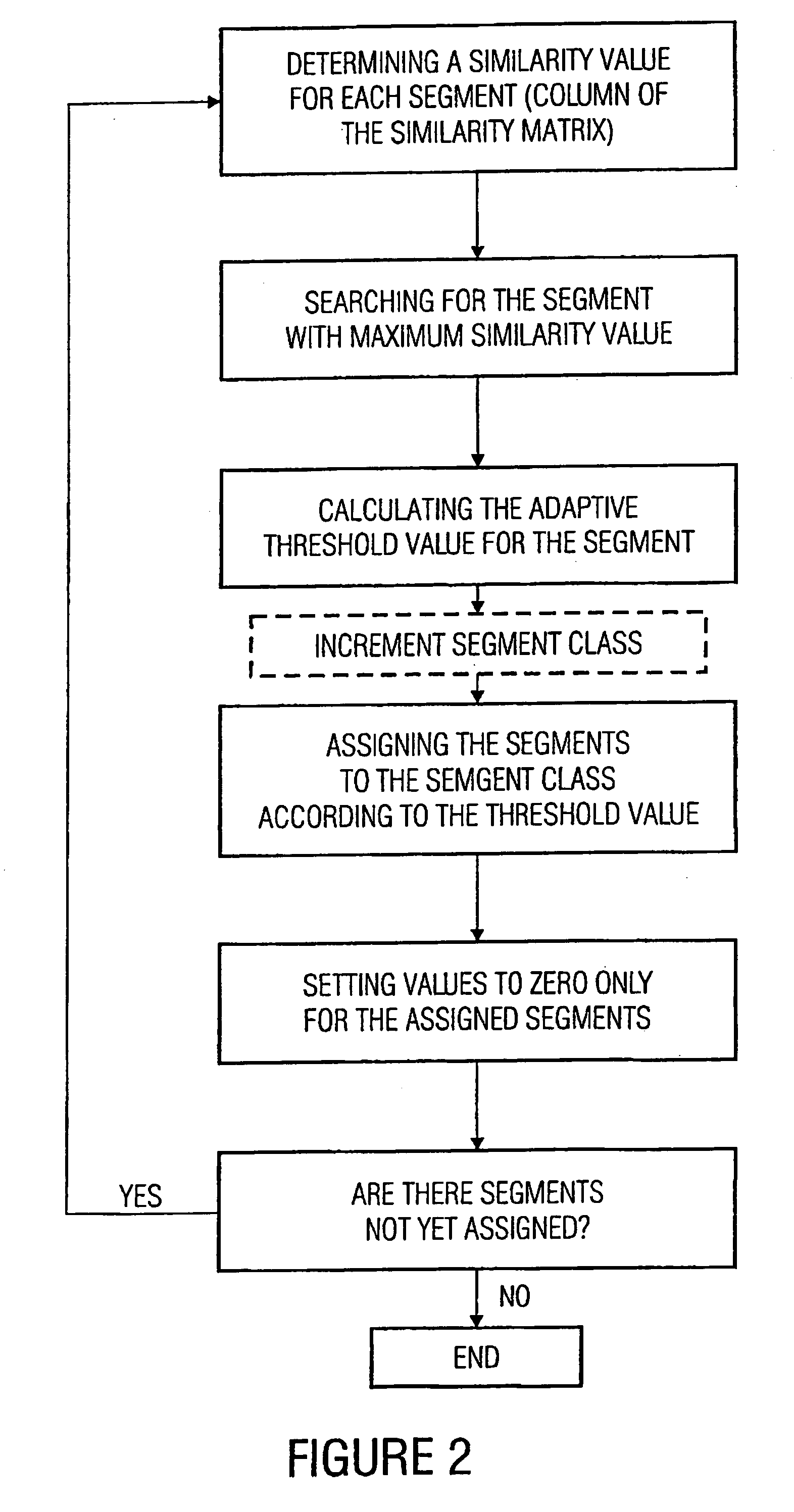Apparatus and method for designating various segment classes
a technology of segmentation and apparatus, applied in the field of audio segmentation, can solve the problems of strong over-segmentation of audio signals, wrong decision being taken, problematic in judgement, etc., and achieve the effect of low similarity score and similarity mean valu
- Summary
- Abstract
- Description
- Claims
- Application Information
AI Technical Summary
Benefits of technology
Problems solved by technology
Method used
Image
Examples
Embodiment Construction
[0062]FIG. 1 shows an apparatus for grouping temporal segments of a piece of music, which is structured into main parts repeatedly occurring in the piece of music, into different segment classes, wherein a segment class is associated with a main part. The present invention thus particularly relates to pieces of music subject to a certain structure, in which similar sections appear several times and alternate with other sections. Most rock and pop songs have a clear structure referring to their main parts.
[0063]The literature treats the topic of music analysis mainly on the basis of classical music, of which however also a lot applies to rock and pop music. The main parts of a piece of music are also called “large form parts”. By a large form part of a piece, a section is understood which has a relatively uniform nature regarding various features, e.g. melody, rhythm, texture, etc. This definition generally applies in the music theory.
[0064]Large form parts in rock and pop music are ...
PUM
 Login to View More
Login to View More Abstract
Description
Claims
Application Information
 Login to View More
Login to View More - R&D
- Intellectual Property
- Life Sciences
- Materials
- Tech Scout
- Unparalleled Data Quality
- Higher Quality Content
- 60% Fewer Hallucinations
Browse by: Latest US Patents, China's latest patents, Technical Efficacy Thesaurus, Application Domain, Technology Topic, Popular Technical Reports.
© 2025 PatSnap. All rights reserved.Legal|Privacy policy|Modern Slavery Act Transparency Statement|Sitemap|About US| Contact US: help@patsnap.com



